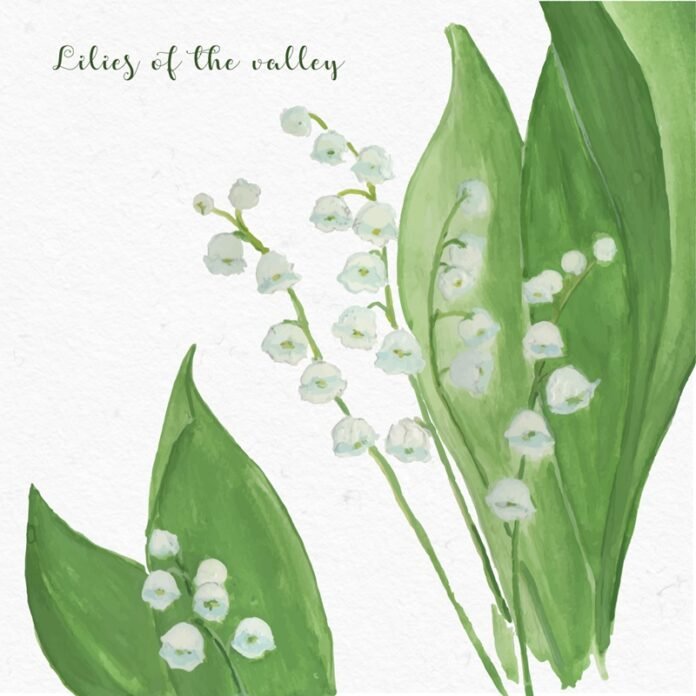Lily of the Valley (Convallaria majalis) is a versatile and enchanting plant that can enhance any garden or landscape with its delicate, fragrant flowers and lush foliage. Whether used as a ground cover in shady areas or as a feature in container gardens, this plant offers a range of possibilities for gardeners and landscapers. Here’s a comprehensive guide to incorporating Lily of the Valley into your garden and landscape designs.
Designing Gardens with Lily of the Valley
Shaded Garden Beds
Lily of the Valley thrives in shaded areas, making it an ideal choice for woodland gardens or shaded garden beds. It can create a lush, green carpet under trees or in the shadow of taller shrubs and perennials.
Edging and Borders
Use Lily of the Valley along garden paths or as edging for flower beds to add a touch of elegance and a fragrant aroma. Its compact growth habit makes it perfect for defining garden spaces.
Mass Planting
For a dramatic effect, plant Lily of the Valley en masse in a dedicated area of your garden. This approach can create a stunning visual impact when the flowers bloom in late spring.
Companion Plants and Flowerbed Combinations
Shade-Loving Companions
Pair Lily of the Valley with other shade-loving plants to create a diverse and visually appealing garden. Suitable companions include:
- Hostas: Their large, textured leaves provide a beautiful contrast to the delicate flowers of Lily of the Valley.
- Ferns: The feathery fronds of ferns complement the lush foliage and add height variation.
- Astilbes: Their colorful plumes add vertical interest and color to the shaded garden.
Seasonal Flower Combinations
Combine Lily of the Valley with spring bulbs like tulips and daffodils. The early blooms of these bulbs will precede the Lily of the Valley, ensuring continuous color in your garden.
Ground Cover Mixtures
Integrate Lily of the Valley with other ground covers such as violets or creeping Jenny to create a rich tapestry of colors and textures.
Container Gardening Techniques
Selecting Containers
Choose containers with good drainage and sufficient depth for the roots. Terracotta pots, wooden planters, and decorative ceramic containers can all work well.
Planting in Containers
- Soil Mix: Use a rich, well-draining potting mix. Adding organic matter like compost will improve soil fertility.
- Spacing: Plant the pips about 2-3 inches apart in containers to allow for adequate growth.
Maintenance for Containers
- Watering: Ensure consistent moisture without waterlogging the soil. Containers dry out faster than garden beds, so monitor soil moisture regularly.
- Feeding: Apply a balanced, slow-release fertilizer in early spring to support healthy growth.
Integrating Lily of the Valley in Various Garden Styles
Cottage Gardens
Lily of the Valley’s quaint, charming appearance makes it a perfect fit for cottage gardens. Combine it with other traditional cottage plants like roses, foxgloves, and delphiniums for a timeless look.
Formal Gardens
In formal gardens, use Lily of the Valley to line pathways or as part of structured garden beds. Its uniform growth and neat appearance suit the orderly nature of formal garden designs.
Japanese Gardens
Lily of the Valley can also be incorporated into Japanese garden styles, where its simplicity and elegance align with the principles of minimalism and natural beauty.
Urban Gardens
For urban gardens and small spaces, utilize Lily of the Valley in containers or vertical garden setups to maximize limited space and add greenery to balconies and patios.
Maintenance Tips for Healthy Growth
Soil and Mulch
- Soil Preparation: Ensure the soil is well-drained and rich in organic matter.
- Mulching: Apply a layer of mulch to retain soil moisture, suppress weeds, and regulate soil temperature.
Watering
- Consistent Moisture: Keep the soil consistently moist, especially during dry spells. Avoid waterlogging, which can lead to root rot.
Pruning and Dividing
- Post-Bloom Care: Remove spent flowers to keep the plant tidy and prevent self-seeding.
- Dividing Clumps: Divide the plants every 3-4 years in the fall to prevent overcrowding and promote healthy growth.
Pest and Disease Control
- Pest Management: Monitor for slugs and snails, which can damage the foliage. Use organic pest control methods if necessary.
- Disease Prevention: Ensure good air circulation to prevent fungal diseases. Avoid overhead watering to reduce the risk of leaf spot and other fungal issues.
Enhancing Aesthetic Appeal
Seasonal Interest
Combine Lily of the Valley with other plants that offer different seasonal interest. For example, planting autumn-blooming perennials nearby can extend the garden’s visual appeal into the fall.
Fragrance Gardens
Create a fragrance garden by pairing Lily of the Valley with other aromatic plants such as lavender, gardenias, and jasmine. This combination will create a sensory delight in your garden.
Wildlife Gardens
Lily of the Valley can attract beneficial insects such as bees. Pairing it with other pollinator-friendly plants can help create a garden that supports local wildlife.
Conclusion
Lily of the Valley is a versatile and beautiful addition to any garden or landscape. Its delicate flowers and lush foliage provide visual interest, while its fragrant blooms add a sensory dimension to your garden spaces. By considering the plant’s preferences and integrating it thoughtfully with other plants and garden styles, you can create stunning and healthy garden landscapes that will be enjoyed for years to come.















